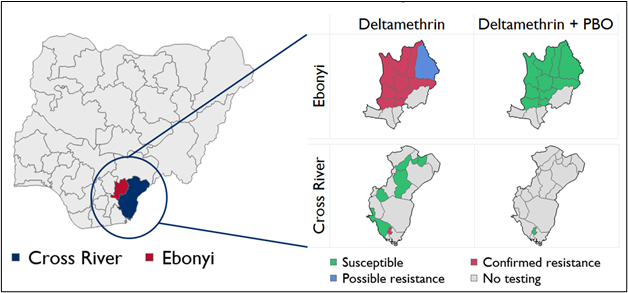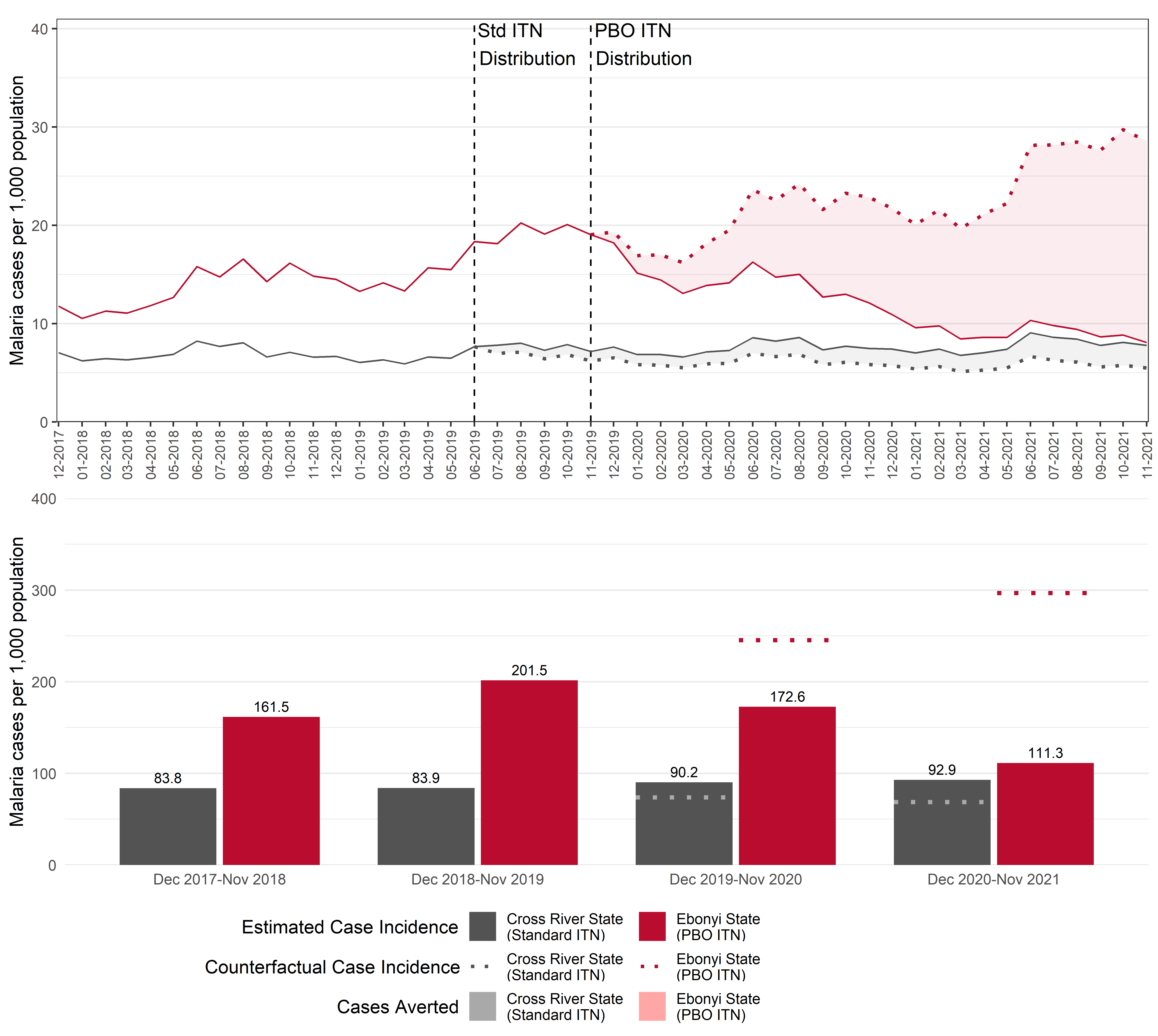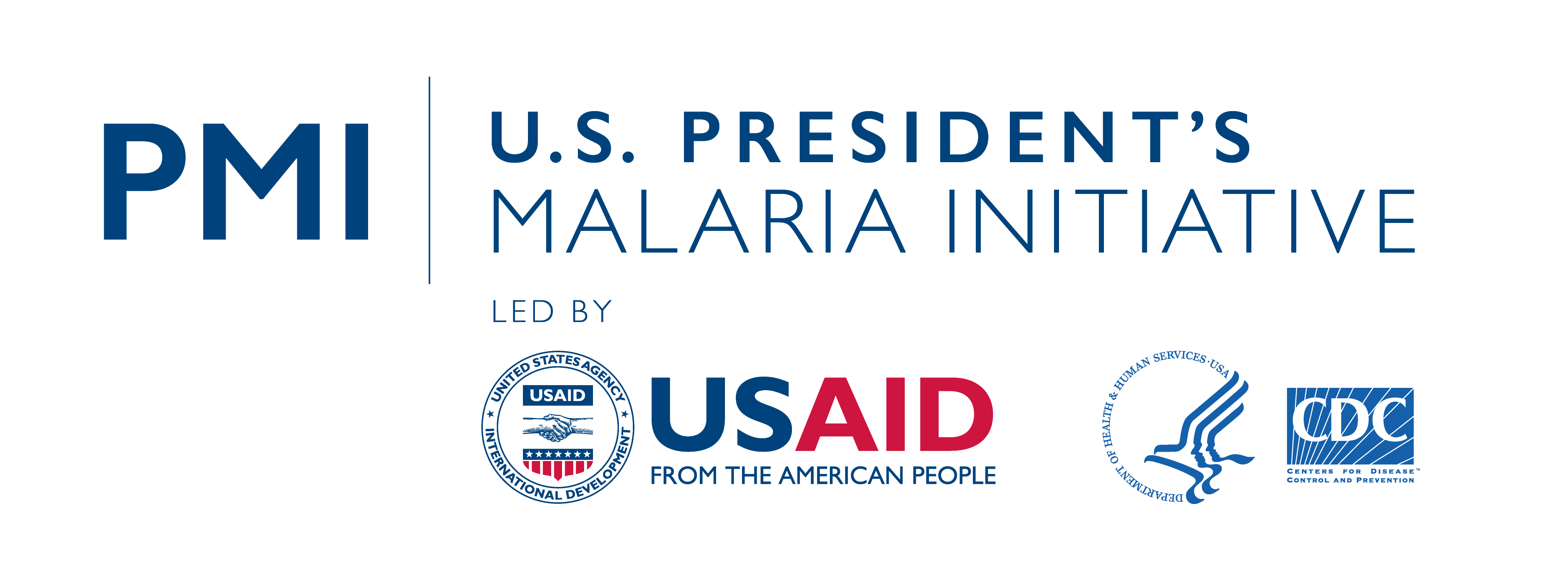“These results have reinforced the national program’s resolve to continue to leverage the evidence that is being produced from entomological surveillance activities.” — Philip Oyale Okoko, Deputy Director/Programme Manager, IMPACT Project, National Malaria Elimination Program, Nigeria
Insecticide-treated nets (ITNs) have been essential tools in the global effort to reduce the burden of malaria. ITNs are the primary vector control intervention in Nigeria, the country with the highest malaria burden globally. However, pyrethroid resistance has been widely documented throughout Nigeria, threatening the effectiveness of this tool. New types of ITNs, such as pyrethroid nets treated with piperonyl butoxide (PBO), have been developed to address this resistance and have been found to significantly lower malaria parasite prevalence compared to standard pyrethroid-only ITNs in countries such as Tanzania and Uganda. The U.S. President’s Malaria Initiative (PMI), through partnerships with local universities, has been monitoring changes in mosquito resistance profiles in Nigeria. Based on this evidence, the Nigeria National Malaria Elimination Program (NMEP) and PMI decided to deploy 1.7 million PBO ITNs in Ebonyi State in November 2019. This was the first PBO ITN campaign in Nigeria.
“Before the Ebonyi evaluation took place we had never deployed PBO nets in Nigeria,” said Philip Oyale Okoko, Deputy Director/Programme Manager for the NMEP. “And when you are talking about vector control and vector control tools, one of the first things you want to achieve is one that has [a] high level of impact.”
In collaboration with the NMEP, the PMI VectorLink Project designed an evaluation to assess both the epidemiological and entomological impact of the PBO ITN campaign in Ebonyi. According to Okoko, “We thought if we are going to be deploying ITNs in Ebonyi State, which has had high level resistance… it would be interesting to see how PBO [nets] are going to perform in such an environment.” The main questions the evaluation sought to answer were:
- What is the impact of PBO ITNs on malaria case incidence in Ebonyi, where Anopheles gambiae s.l. has confirmed high intensity pyrethroid resistance (Figure 1)?
- How does the impact of PBO ITNs on malaria case incidence in Ebonyi compare to the impact of standard ITNs in the neighboring state of Cross River (with a campaign in the same year), where An. gambiae s.l. are still susceptible to pyrethroids?
- What is the impact of PBO ITNs on entomological indicators (human biting rate and indoor resting density) in a setting of confirmed high intensity pyrethroid resistance?

Figure 1. Resistance of An. gambiae s.l., the major malaria vector, to deltamethrin with or without PBO in Ebonyi and Cross River, 2019.
A core piece of this evaluation was the use of routine health systems data, which provides more timely data at a lower cost and at a more granular level. According to Jules Mihigo, PMI’s Resident Advisor in Nigeria, “The most available data is the routine data that’s available every month. For the Malaria Indicator Survey (MIS) results, you have to wait for a couple of years.” He added that there have been continued investments by the NMEP, PMI, and other key stakeholders in data quality, sharing, and use, and that a lot of work is done by partners on the ground to validate the data each month.
Using this routine data from the country’s National Health Management Information System (HMIS), a controlled interrupted time series analysis was conducted using monthly incidence data from two years before and after the PBO ITN campaign in Ebonyi State (December 2017 to November 2021). A pre/post analysis was also conducted to assess the impact of the PBO ITNs on two entomological indicators of interest—human biting rate and indoor resting density—during the high transmission season before and after the mass campaign. Results from these analyses found that:
- In Ebonyi, PBO ITNs were associated with a 46.7% decrease in malaria case incidence in the two years after the PBO ITN distribution compared to if no ITNs had been distributed, with a significant decrease from 269.6 predicted cases per 1,000 population to 143.6 (Figure 2).
- In Cross River, there was a significant 28.6% increase in malaria case incidence following the standard ITN distribution, with an increase from 71.2 predicted cases to 91.6 per 1,000 population.
During the high transmission season immediately following the PBO ITN campaign in Ebonyi, the human biting rate was 72% lower and indoor resting density was 73% lower compared to the high transmission season immediately before the campaign.

Figure 2. Monthly confirmed malaria cases per 1,000 population in Ebonyi and Cross River states, Nigeria in the two years before and after (December 2017-November 2021) the 2019 Ebonyi PBO ITN campaign with counterfactual of no ITN distribution.
“The reasons why the evaluation was conducted at all was (1) to determine the impact of this new technology and (2) to help us make decisions on future deployments beyond Ebonyi State,” remarked Okoko. “This evaluation helps us know that some of these decisions were right.”
These results were subsequently used in the NMEP’s Global Fund application to advocate for greater use of PBO ITNs in areas of documented pyrethroid resistance. According to Mihigo, Nigeria has since moved towards procuring new types of nets in areas with confirmed pyrethroid resistance for mass campaigns moving forward: “The result of entomological monitoring, then the results [from] the routine data, and then the Malaria Indicator Survey was something which informed people that it was time to switch.”
The results from these epidemiological and entomological analyses contribute to a set of ongoing evaluations designed to assess the impact of new types of ITNs in Nigeria. The New Nets Project, a partnership funded by Unitaid and the Global Fund and led by IVCC, evaluated the impact of dual active ingredient (AI) nets and PBO ITNs on malaria prevalence, malaria case incidence, and key entomological indicators in Osun and Kwara states. Final results from these evaluations are expected later this year.
Additionally, the NMEP and PMI made the joint decision to distribute PBO ITNs and Interceptor® G2 (IG2, a dual AI net) ITNs in Sokoto and Kebbi states, respectively, between September and November 2022. Future analyses will be conducted by PMI Evolving Vector Control to Fight Malaria (PMI Evolve) Project, over the three years following these campaigns to assess the relative epidemiological and entomological impacts of these ITNs in two states with some of the highest malaria prevalence rates in the country. Collectively, results from these evaluations will provide critical evidence to inform the Nigeria NMEP’s future ITN campaign planning to ensure that the most effective nets are selected based on the state’s insecticide resistance profile so that they benefit the population as intended to end malaria faster.
Read this story in French: Évaluation de l’impact épidémiologique et entomologique de la première campagne de moustiquaires imprégnées de pyréthrinoïdes-PBO au Nigeria
Download a PDF version of this story in English: Evaluating the Epidemiological and Entomological Impact of Nigeria’s First PBO Insecticide-Treated Net Campaign

